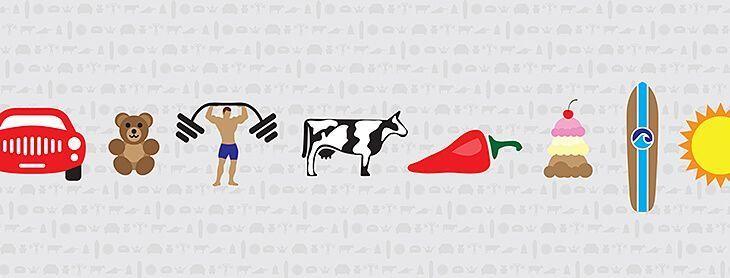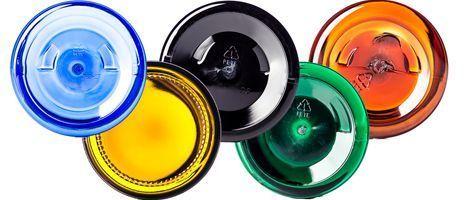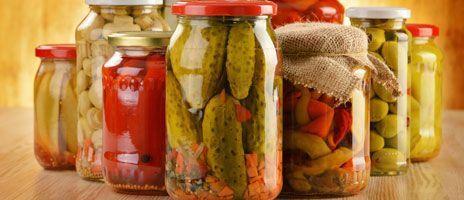How Stuff Works: Pumps and Sprayers Part 2


Last time, we discovered a little bit about pumps and sprayers and how they work. You learned about the basics of operating these devices (don't use them upside down, and make sure that you prime them first with a few pumps). We also learned some new fancy words, reciprocating positive displacement pumps, which really just means pumps that don't let liquid go backwards. And we discussed how valves prevent said liquid from going the wrong way. Now let's continue dissecting these pumps.
Anatomy of the Pump Continued
We already learned about the dip tube and the valve. Above the valve is a chamber. This chamber is where the liquid hangs out before it is dispensed. Once the liquid is in this chamber, it can't go back into the container because of that handy little valve we talked about last time. The other two main parts of the pump are the piston and the spring(s) (some pumps have more than one). The piston is what compresses the chamber, and the spring(s) push the piston back up. The piston is usually hollow, and this tube, or stem, leads up to the nozzle.
Detour for Nozzles
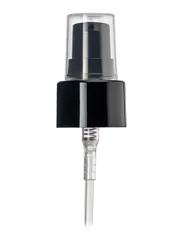
Let's take a quick detour to explore the different kinds of nozzles. Some of our products produce a fine mist spray, while others aren't quite as fine. And treatment pumps don't spray anything, but dispense in a thick stream instead of a spray. This is due to the structure of the nozzle. Fine mist sprayers have grooves on the inside of their orifice cups (fancy name for the little piece of plastic through which the liquid sprays). They have one tiny hole for the liquid to spray out of, and the grooves and tiny hole result in a fine mist. Treatment pumps, on the other hand, don't have this orifice cup. Instead, the liquid just escapes through a large hole. These work best for thicker liquids.
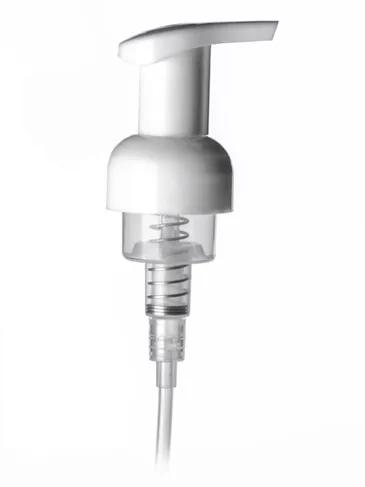
Return from the Detour
Back to our breakdown of how the pump works. When you press down on the sprayer or pump head, the piston presses down into the chamber. Whatever is in the chamber needs to escape, and the easiest path is up through the stem and out the nozzle. As soon as you release the sprayer head, the chamber fills up with liquid. This seems to defy gravity, so our friendly scientist Aristotle will clear things up.
Thanks to Aristotle, we know that nature abhors a vacuum. What this means is that, due to Earth's gravity, nature contains no completely empty spaces. These empty spaces are immediately filled with denser surrounding material. How does this apply to pumps? When you press down on the sprayer or pump head, it compacts that little space within the chamber. When you release it, something has to fill that space. In this case, the space fills with liquid drawn up through the dip tube. And that is how a pump works.
Final Thoughts and a Quick Summary of Pumps
If your brain is sufficiently fried, don't be alarmed. Pumps are pretty complex little devices. Let's review the process in simple terms:
First, you press the sprayer head. This compresses the chamber. When there is liquid in it, the liquid can't go back down the dip tube because of the valve, so it comes out of the nozzle. When you release the sprayer head, the chamber needs something to fill it (don't forget about Aristotle!). Liquid comes up the dip tube, through the one-way valve, and fills the chamber up again. Repeat. That's really all there is to it!
Now that you know how the reciprocating positive displacement pump works, you're ready to conquer the world! Okay, maybe not the world, but you certainly know just a little bit more than you did before. If you're ready for more pumps and sprayers, check out some of our inventory. Next time, maybe we'll figure out how trigger sprayers work!
